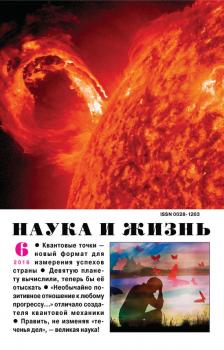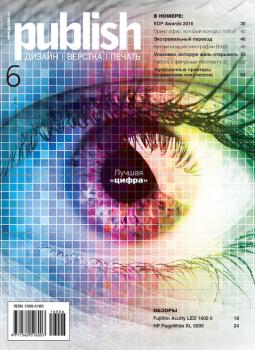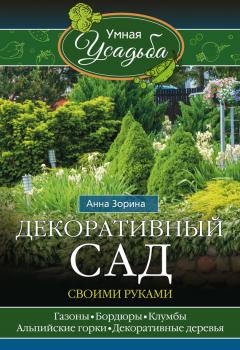MREADZ.COM - много разных книг на любой вкус
Скачивание или чтение онлайн электронных книг.Металлоснабжение и сбыт №06/2016
Шестой номер журнала «Металлоснабжение и сбыт» открывает аналитический обзор «Жаркая весна 2016 года», посвященный подъему цен на мировом и российском рынках стали в марте-мае текущего года, вызвавший настоящий накал страстей. Поскольку ключевой темой этого номера является трубная отрасль, то читателям будут безусловно интересны интервью с руководителем блока «ТМК-Средняя Азия» Трубной Металлургической Компании Владимиром Колесниковым, финансовым директором Уральского трубного завода Александром Михалевым, генеральным директором Ижорского трубного завода Дмитрием Покровским, генеральным директором Загорского трубного завода Денисом Сафиным, а также обзор по конференции «Стальные трубы: производство и региональный сбыт-2016». Кроме того, в новом номере можно прочитать обзоры по материалам круглого стола «Рынок проката черных металлов и металлоконструкций ЮФО» и конференций «Рынок металлопродукции и металлоконструкций Приволжья» и «Актуальные вопросы производства и применения высоколегированных сварочных материалов». Внимание читателей обязательно привлекут интервью с директором Торгового дома ММК Денисом Лядовым и коммерческим директором Тихорецкого завода металлоконструкций Валерием Пучковым, статья об методах создания сети региональных металлобаз и обзор по материалам состоявшегося в Федеральной антимонопольной службе круглого стола по развитию конкуренции в сфере металлургии. Большое внимание в номере уделено развитию глобального рынка металлоконструкций, динамике цен на лом черных металлов и будущему черной металлургии Ирана. Те, кому интересна цветная металлургия обязательно прочтут интервью с генеральным директором компании УГМК-ОЦМ Александром Банниковым и обзор по ситуации на мировом рынке алюминия. Завершают же новый номер обзоры о турнире по спортингу «Зоркий глаз» и итогах фотоконкурса «Мой маленький и верный друг» и, разумеется, традиционная металлургическая мозаика.
Наука и жизнь №06/2016
«Наука и жизнь» – ежемесячный научно-популярный журнал для всех возрастов и профессий. На страницах журнала: новости науки и техники, статьи по истории, биологии, физике, медицине, искусствоведению, научно-фантастические рассказы, материалы традиционных рубрик: «Мир увлечений», «Кунсткамера», «Маленькие хитрости». Для школьников есть специальный раздел «Ума палата». На портале журнала www.nkj.ru: новости науки и техники, видео, архив, интервью, on-line кроссворды. В номере: Квантовые точки – новый формат для измерения успехов страны Девятую планету вычислили, теперь бы её отыскать «Необычайно позитивное отношение к любому прогрессу…» отличало создателя квантовой механики Править, не изменяя «теченья дел», – великая наука! и многое другое
Русский пионер №5 (65), июнь-август 2016
«Русский пионер» – литературный иллюстрированный журнал. Это журнал о пионерах в жизни, о тех, кто достиг успеха в различных областях. В нем читатель найдет колонки лучших российских журналистов, а также известных людей, которые на страницах журнала делятся своими мнениями и взглядами на самые разнообразные темы: политика, бизнес, наука, спорт, культура и другие. В номере: Урок уроков. Как это cделалось в Одессе. Марлен Хуциев о том, как город снимался в кино Урок правды. Киноплоть, кинокровь. Вуди Аллен о том, как смотреть кино, чтобы стать режиссером Дневник наблюдений. Живой таксист (оригинальный сценарий короткометражного фильма) Урок мужества. Спецкор. Обозреватель «РП» про верность своему делу Барабанщик. Кина не будет. Александр Демидов про то, что закончилось кино, которое можно пересматривать Подшефная. Бабушка не может ошибаться. Мари Армас про кино и психологию и многое другое!
Классный журнал №22/2016
«Классный журнал» – современный интерактивный журнал для детей младшего и среднего школьного возраста. Издается на протяжении 10 лет и является одним из популярнейших детских еженедельников России. Каждый номер «Классного журнала» содержит самую актуальную информацию для детей: от мультиков, компьютерных игр и детских киноновинок до научных открытий, спорта и техники. В журнале соблюдается баланс между познавательной и развивающей информацией. Уникальные рисованные герои Пантукль и Жукабра живут на страницах журнала, помогая юным читателям разобраться в интересующих их вопросах. В гостях у них бывают и другие популярные детские герои.
ПониМашка. Развлекательно-развивающий журнал. №22/2016
«ПониМашка» – развлекательный журнал для детей от 4 до 7 лет. Направлен на развитие творческих способностей и внимания ребенка. Содержит интересные задания для ребят, в игровой форме обучающие грамоте, математике, логике. На страницах журнала дети могут рисовать, решать сканворды, раскрашивать, играть в настольные игры и разгадывать ребусы. Главный персонаж журнала, пони по имени Машка, путешествует по загадочным местам, знакомя детей с миром животных, птиц и даже вещей. Каждый выпуск – тематический. Тема текущего выпуска – «ПониМашка делает ремонт». Журнал поможет вашим детям отдыхать с пользой!
Журнал Publish №06/2016
«Publish» – журнал о современных издательских и полиграфических технологиях, от графического дизайна и допечатных процессов до послепечати. В номере: Тема номера: Лучшая «цифра» EDP Awards 2016 Принт-офис, который всегда с тобой Экстремальный переезд Автоматизация типографии ВШЭ Упаковка, которую жаль открывать Работа с фигурным текстом (ч. 2) Футболочные принтеры (справочник покупателя) Fujifilm Acutiy LED 1600 II HP PageWide XL 5000 и многое другое
Пока едет «Скорая». Рассказы, которые могут спасти вашу жизнь
К сожалению, никто из нас не застрахован от случаев, требующих срочной медицинской помощи. Важно, чтобы она была квалифицированной, а главное, своевременной, ведь часто люди гибнут до приезда скорой помощи. Иногда это предопределено, иногда решающим оказывается время доезда. Бывает так, что человек нуждался в помощи, и рядом было немало людей, способных ее оказать, и сама по себе она ничего сложного не представляла, но никто не знал, что делать и чем помочь. И действительно, минут на пять бы пораньше – и кто знает, может, у пострадавшего или больного был бы шанс выжить. Врач неотложной помощи Андрей Звонков, написал уникальную книгу, содержащую несложные приемы и правила оказания помощи, которые помогут вам сориентироваться в критической ситуации. Ее особенностью является то, что написана она в форме захватывающих рассказов, а значит, слушать ее будет не только полезно, но и интересно. Внимание! Информация, содержащаяся в аудиокниге, не может служить заменой консультации врача. Необходимо проконсультироваться со специалистом перед применением любых рекомендуемых действий. Продюсер аудиозаписи: Татьяна Плюта © Звонков А.Л., текст, 2015 © Золин П.О., художественное оформление, 2015 © Оформление. ООО "Издательство «Эксмо», 2015 © & ℗ ООО «Аудиокнига», 2016
Фамильные ценности, или Возврату не подлежит
Везет тем, кто родился в семье с богатой родословной. Счастливы, кто рос в доме, где есть добрые традиции, которые передаются от поколения к поколению. Особенно удачливы те, кто становится наследником фамильных ценностей. Бальке подфартило: он действительно родился с золотой ложкой во рту. Но чтобы стать во главе семьи, взять в свои руки опасный бизнес – производство и продажу ювелирных изделий, ему нужно стать наконец взрослым. Именно поэтому его бабушка написала такое завещание, по которому Бальке придется в корне изменить свою судьбу. Условия в нем парадоксальные, выполнить их может только избранный. Продюсер аудиозаписи: Татьяна Плюта © Резепкин О., 2016 © Оформление. ООО "Издательство "Э", 2016 © & ℗ ООО «Аудиокнига», 2016
На расстоянии вдоха
Райден Куроширо узнал женщину, которую он когда-то любил и которая выманила у него пятьдесят миллионов долларов. Точнее, не узнал, а почувствовал, что рыжеволосая красавица Скарлетт и предавшая его пять лет назад Ханна – один и тот же человек. Райден жаждет снова обладать ею, несмотря на то что через два с половиной месяца должна состояться его свадьба…
Декоративный сад своими руками
Можно так оформить свой участок, что помимо скучных овощных грядок и трудолюбивых плодовых деревьев на нем найдется место и декоративной растительности. Главное – так подобрать цветы и кустарники, чтобы цветение не прерывалось с весны до глубокой осени. Автор поделится с вами секретами оформления декоративного сада и ухода за ним. Газоны и бордюры, клумбы, альпийские горки и одиноко стоящие роскошные декоративные деревья будут радовать ваш глаз с ранней весны и до поздней осени.









